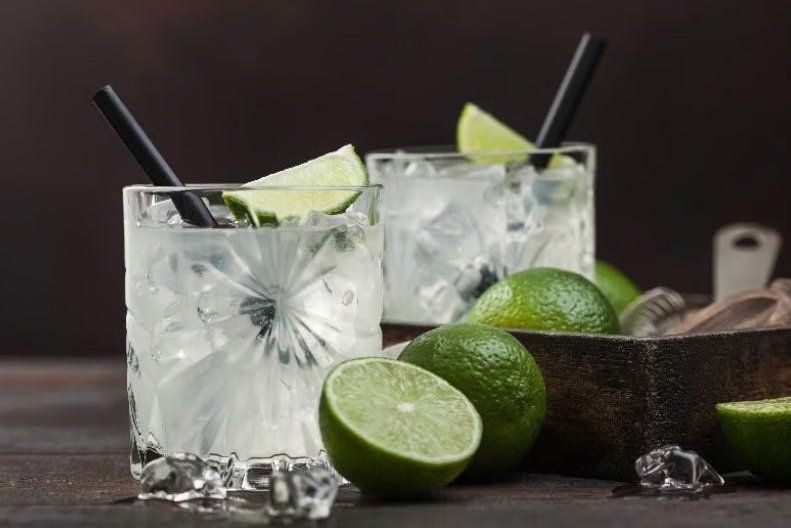Margarita Rash
Is one more sun- or skin-kissed? The Real Story Behind “Margarita Rashes”
A cool margarita is the perfect way to toast to the sun’s return in the springtime. But this tasty drink contains a secret risk that should not be ignored: the “margarita rash.” This is not your normal sunburn; rather, it’s a reaction brought on by sunshine and citrus.
Table of Contents

Identifying the Offender: An Explanation of Phytophotodermatitis
Margarita Rash
Scientifically speaking, the margarita rash is known as phytophotodermatitis, which is simply “plant-light-skin inflammation.” Who’s at fault? Furanocoumarins are a naturally occurring class of compounds that can be found in a wide variety of fruits and vegetables, such as figs, celery, parsley, limes, and grapefruits. These furanocoumarins cause inflammation when they come into touch with your skin and are then exposed to sunshine, especially UVA rays.
From Sunlight to Pain: Signs of a Strawberry Rash
Margarita Rash
Usually, margarita rash symptoms take time to manifest. Following citrus contact and sun exposure for 24 to 48 hours, you may observe:
- Redness and irritation: The impacted regions may turn red and swollen, like a sunburn.
- Itching and burning: To make matters worse, the rash may be extremely irritating and painful.
- Blisters: On the exposed skin, painful blisters may form in extreme circumstances.
- Hyperpigmentation: The rash may leave behind transient dark areas in the affected area when it heals. Sun exposure can exacerbate them, however they normally go away with time.
Looking Past Margaritas: Who May Have Phytophotodermatitis?
Margarita Rash
Although the name alludes to a margarita, phytophotodermatitis is a reaction that can occur to anyone who touches citrus fruits and then spends time in the sun. This comprises:
- Bartenders: Bartenders are particularly at risk since they handle limes and other citrus fruits frequently.
- Food service personnel: This risk affects anyone who handles citrus fruits in restaurants or kitchens.
- Gardeners: Working with citrus trees, celery, or parsley herbs might cause skin discomfort.
- Outdoor enthusiasts: Anyone who enjoys being outside, whether hiking or camping, may unintentionally set off the reaction.
The good news is that there is no risk of death associated with phytophotodermatitis. But the pain and possible scarring can really ruin your summertime fun.
Stop the Pain: How to Stay Away from a Margarita Rash
Margarita Rash
Fortunately, there are easy ways to enjoy your favourite zesty drinks and the sunshine without having to worry about getting a rash:
- Complete Washing: After handling citrus fruits, the most important thing to do is wash your hands and any exposed skin thoroughly with soap and water.
- Precautions: To reduce skin contact when making margaritas or cooking with citrus, wear gloves and long sleeves or other protective clothes.
- Sun Safety at All Times: Always use sunscreen with an SPF of 30 or higher, and reapply it every two hours, especially after swimming or perspiring, regardless of whether you have been exposed to citrus.
- Seek Shade: Make the most of your time outside by carefully looking for shade between the hours of 10 a.m. and 4 p.m.
Options for Treatment: Calming the Skin in the Event of a Rash
Margarita Rash
In the event that you get a margarita rash, follow these techniques to ease the pain:
- Cool compresses: To lessen swelling and irritation, use cool compresses soaked in milk or water to the affected area.
- Calamine lotion: Calamine lotion has the ability to reduce irritation and itching.
- Painkillers available over-the-counter: Painkillers such as acetaminophen or ibuprofen can be used to treat discomfort.
- Moisturiser: To aid in healing, use a fragrance-free lotion to the affected region.
- It is best to see a healthcare provider if the rash is severe, comes with a fever, or blisters.
In Summary: safely enjoy the sunshine and citrus.
Margarita Rash
You may keep enjoying the sunshine, delectable cocktails, and the delights of spring and summer by learning the science behind the margarita rash and adopting a few easy measures. Recall that eliminating discomfort and guaranteeing a genuinely pleasurable outdoor experience only requires a small amount of awareness.


